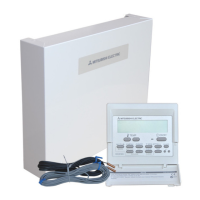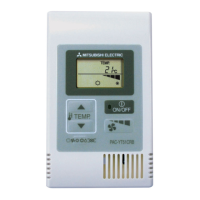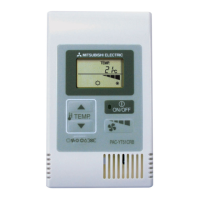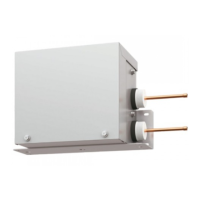Why does the room temperature rise during DHW operation with my Mitsubishi Electric Controller?
- LLisa MedinaSep 7, 2025
If the room temperature rises during DHW operation, it is likely due to a 3-way valve failure. Check the 3-way valve.
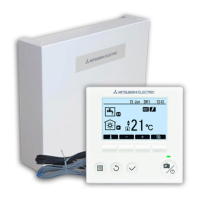
Why does the room temperature rise during DHW operation with my Mitsubishi Electric Controller?
If the room temperature rises during DHW operation, it is likely due to a 3-way valve failure. Check the 3-way valve.
Why doesn't the cooling system cool down to the set temperature on my Mitsubishi Electric Controller?
If the cooling system does not cool down to the set temperature, it could be because the water in the circulation circuit is unduly hot, causing Cooling mode to start with a delay to protect the outdoor unit. It could also be because the outdoor temperature is lower than the preset temperature below which the freeze stat. function is activated, preventing Cooling mode from starting. To run Cooling mode overriding the freeze stat. function, adjust the preset temperature below which the freeze stat. function is activated.
Why does my Mitsubishi Electric Controller switch to DHW mode after a power failure?
If the FTC unit that was running in the heating mode before power failure is running in the DHW mode after power recovery, it's because the FTC unit is designed to run in an operation mode with a higher priority (i.e. DHW mode in this case) at power recovery. After the DHW max. operation time has elapsed or the DHW max. temperature has been reached, the DHW mode switches to the other mode (ex. Heating mode).
Why are the electric heaters activated soon after DHW or LP mode starts after cooling on my Mitsubishi Electric PAC-IF071B-E Controller?
If the electric heaters are activated shortly after DHW or LP mode starts running after Cooling mode, it is because the setting time period of Heat-pump-only operation is short. Adjust the setting time period of Heat-pump only operation.
Why is my Mitsubishi Electric PAC-IF071B-E Controller water circulation pump so noisy?
If you are experiencing noise from the water circulation pump, it is likely due to air in the pump. Use manual and automatic air vents to remove air from the system. Top up water if necessary to achieve 1 bar on the primary circuit.
Why does the heating mode on my Mitsubishi Electric PAC-IF071B-E Controller take so long to start?
If the heating mode has been on standby for a long time (does not start operation smoothly), it may be because the time of “Delay” set in “Economy settings for pump” is too short. Increase the time of “Delay” in “Economy settings for pump.
| Brand | Mitsubishi Electric |
|---|---|
| Model | PAC-IF071B-E |
| Category | Controller |
| Language | English |
Precautions for selecting installation environment to prevent electric shock or unit damage.
Essential checks and precautions for electrical wiring and grounding to prevent shock or fire.
General guidelines and requirements for performing all electrical connections by qualified technicians.
Details the procedure for connecting the FTC (Main) unit to a separate power source.
Instructions for wiring and installing the main remote controller to the FTC unit and the wall.
Guide on connecting various thermistors (room, pipe, water, tank) to the FTC controller for accurate temperature sensing.
Details how to connect external inputs (thermostats, switches) and outputs (pumps, valves) to the FTC controller.
Overview of DIP switch locations and their functions for system configuration and operation.
Configuring system functions like boiler, DHW tank, immersion/booster heaters, mixing tank, and flow sensor via DIP switches.
Pre-test run checks for wiring, piping, power supply, and insulation resistance to ensure safety.
Procedure for checking and resetting error codes displayed on the FTC unit.
Guide for the initial setup process when the remote controller is first powered on, including language and basic settings.
Accessing and navigating the main settings menu, with user and installer level access distinctions.
Accessing the service menu for advanced settings, diagnostics, and system adjustments, protected by a password.
Performing manual control of system components like circulation pumps and valves for filling or maintenance.
A comprehensive guide to identifying and resolving various fault symptoms and error codes displayed by the system.
Essential electrical connection procedures for both FTC (Main) and FTC (Sub) units in multi-unit systems.
Guide for connecting thermistors (TH2, THW1, THW2) to the FTC (Sub) controller for accurate temperature readings.
Setting DIP switches on FTC (Sub) units to match outdoor unit type and system configuration.
Common issues and solutions for problems encountered with multiple outdoor unit systems and remote controller communication.


